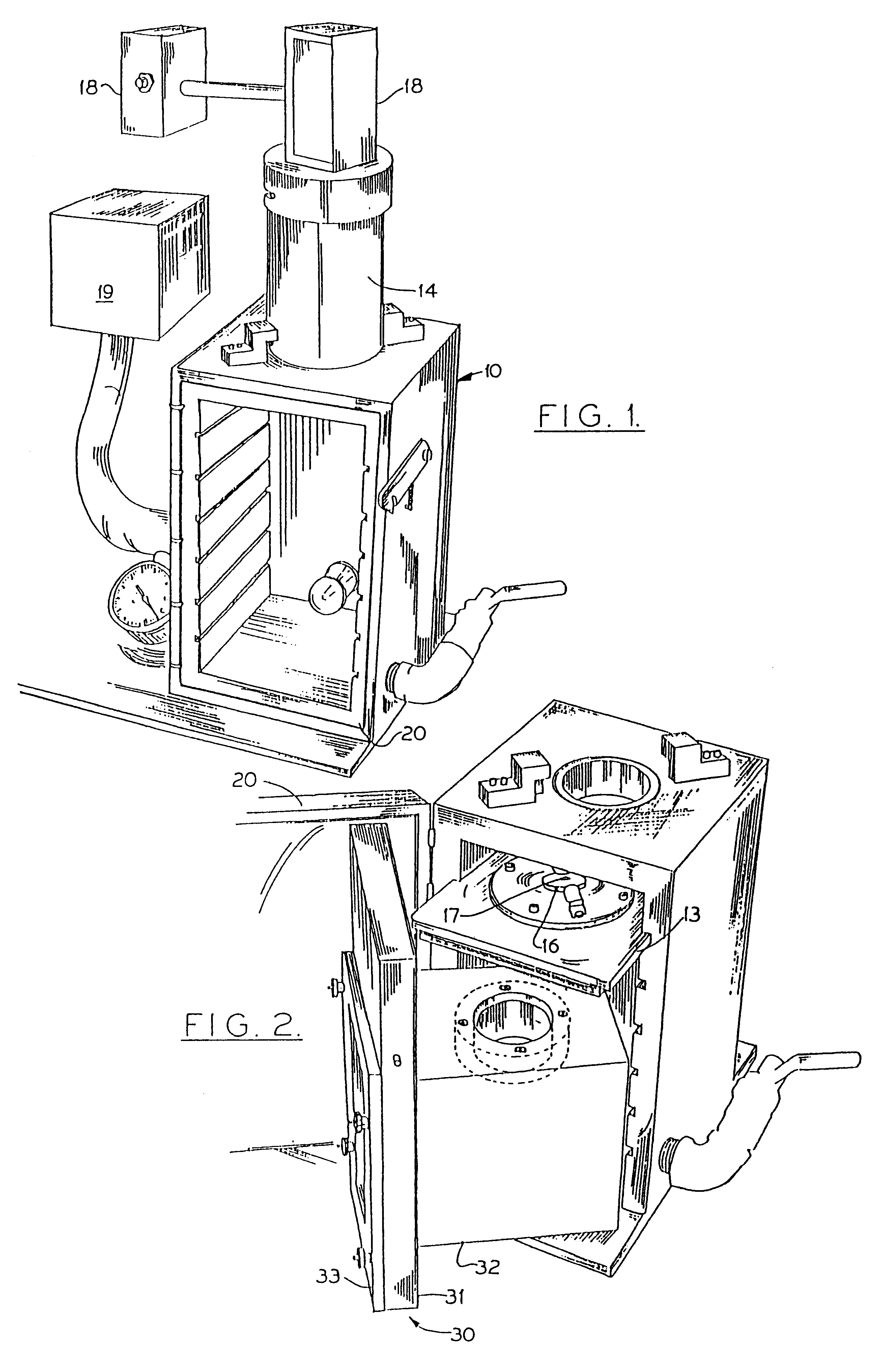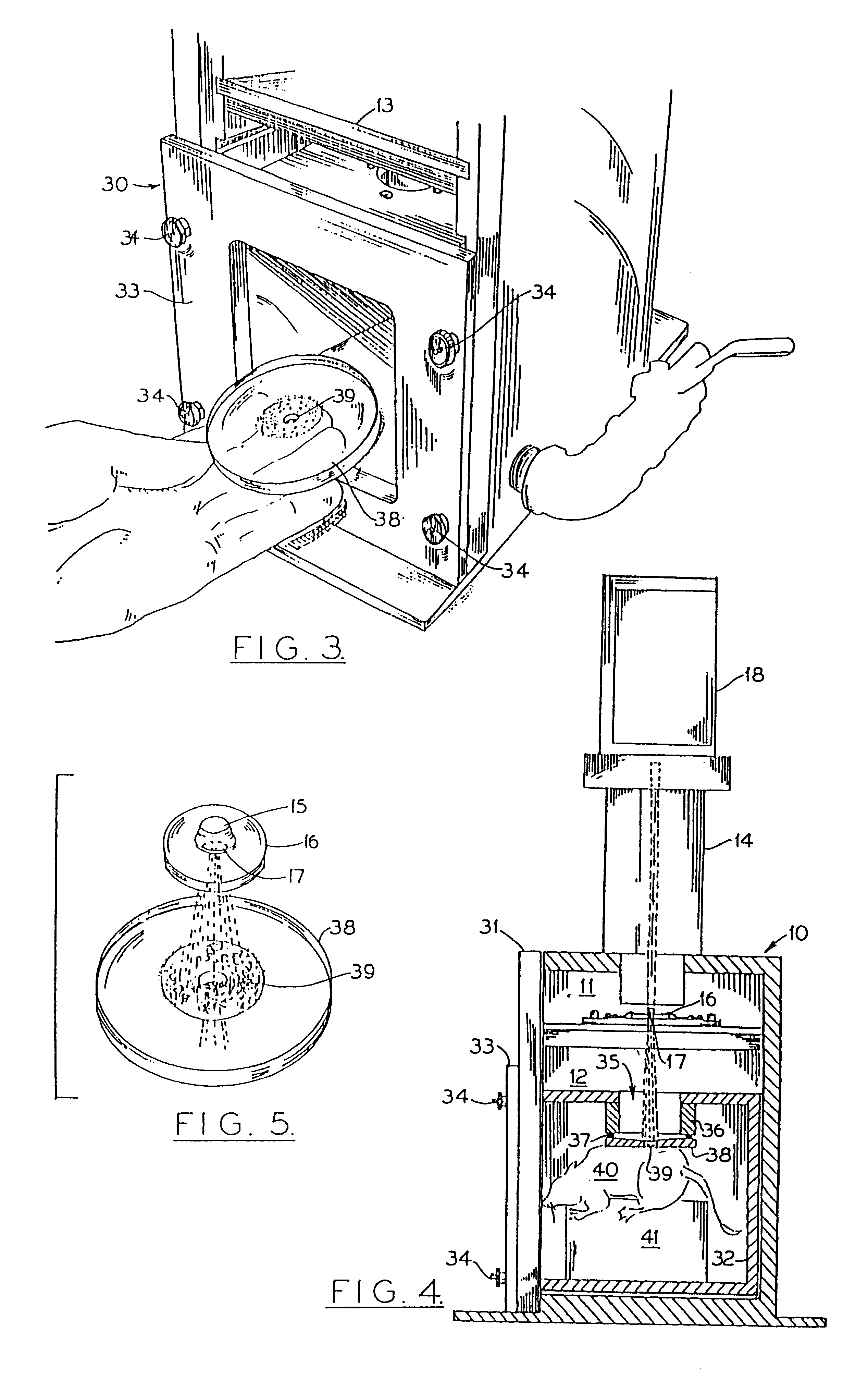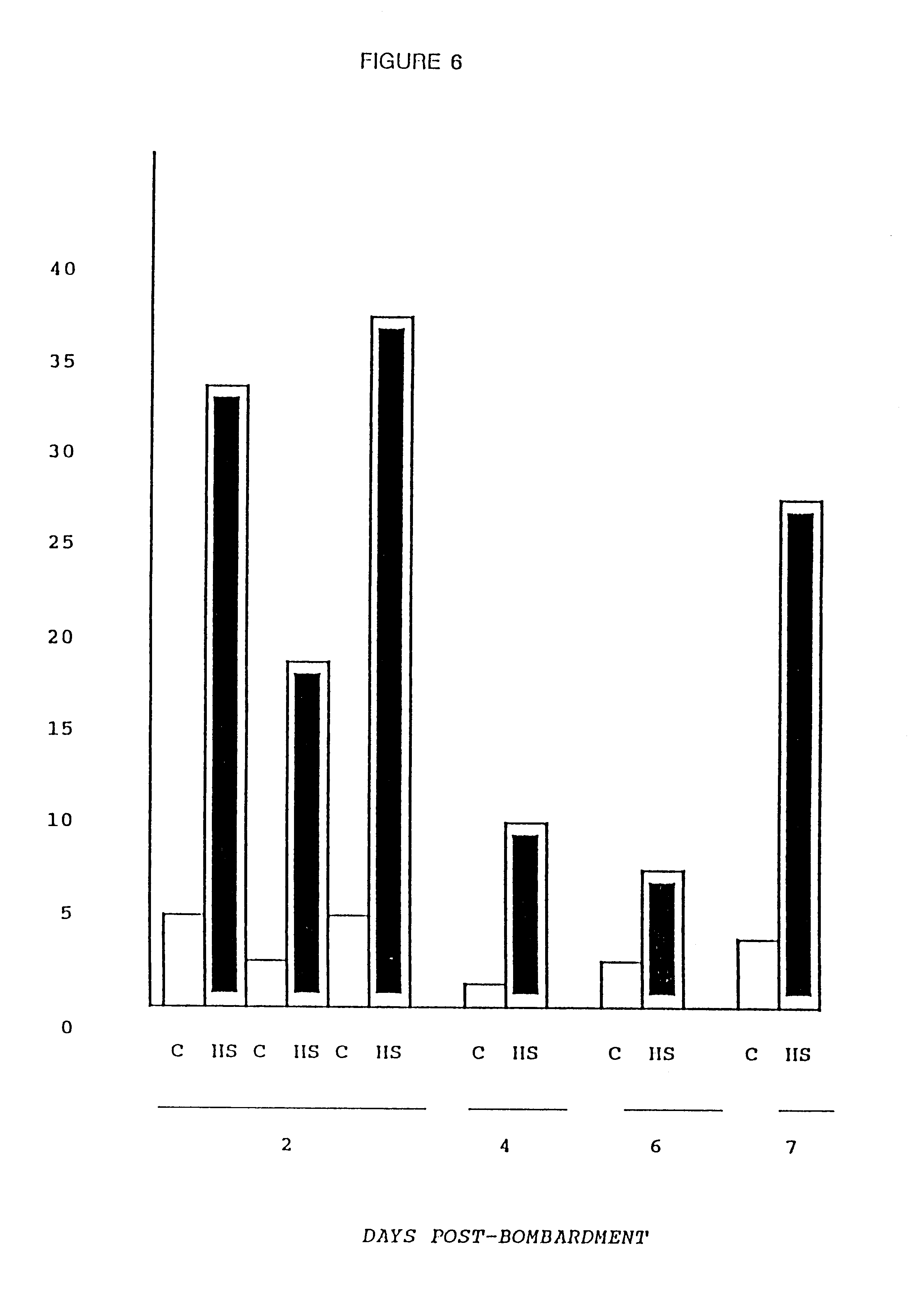Particle-mediated bombardment of DNA sequences into tissue to induce an immune response
- Summary
- Abstract
- Description
- Claims
- Application Information
AI Technical Summary
Benefits of technology
Problems solved by technology
Method used
Image
Examples
example 1
Particle-Mediated Transformation of Terminally Differentiated Skeletal Myotubes
This example demonstrates that primary cultures of fully differentiated, non-dividing skeletal myotubes can be transformed in vitro using a DNA-particle accelerator. The introduced genes are not rapidly degraded, but remain transcriptionally active over the life of the culture (twelve days).
Myoblast cultures (4.times.10.sup.5 cells) were established from breast muscles of eleven-day chick embryos in gelatin-coated 60 mm plastic dishes in Dulbecco's Minimum Essential Medium (DMEM) supplemented with 10% horse serum and 5% embryo extract. After five days without fresh media, cultures consisted almost entirely of multinucleated myotubes, some of which showed cross-striations. Some cultures were also treated with cytosine arabinoside (ara-C: 1.5 to 3.0 .mu.g / ml) to inhibit growth of residual undifferentiated myoblasts or non-myogenic cells. See G. Paulath et al., Nature 337, 570 (1989). At this stage (five day...
example 2
Fate Over Time of DNA Introduced in Terminally Differentiated Skeletal Myotubules by Particle Bombardment
This Example addressed the fate of the introduced DNA over time by measuring the response of an inducible promoter at varying intervals after bombardment. Myotubes were transformed as described in Example 1 above, but with the firefly luciferase gene under the control of the human HSP70 promoter. See B. Wu et al., Proc. Nat. Acad. Sci. USA 83, 629 (1986). On days 2-7 following bombardment, luciferase activity was measured in sister cultures that were either maintained at 37.degree. C. (Control=C) or placed at 45.degree. C. for 90 minutes followed by recovery at 37.degree. C. for three hours (Heat Shock=HS).
The cultures maintained for 6-7 days following bombardment were re-fed at two day intervals with conditioned media (depleted of mitogenic growth factors) from untransfected myotube cultures. FIG. 6 demonstrates that inducible expression of the introduced plasmid was maintained ...
example 3
Site of Transgene Expression in Cultures of Terminally Differentiated Myotubules
This Example was conducted to determine whether trans-gene expression was occurring within the fully differentiated myotubes, as distinguished from mononuclear cells that remain within these primary cultures. Cultures of differentiated myotubes were transfected, by microprojectile bombardment as described in Example 1, with a plasmid construct containing the Drosophila Alcohol Dehydrogenase (ADH) gene under the control of the Rous Sarcoma Virus long terminal repeat (pRSV-ADH). On the following day, cells were fixed and stained according to the method described by C. Ordahl et al., Molecular Biology of Muscle Development 547 (C. Emerson et al. Eds. 1986), and photographed under phase contrast with misaligned phase rings.
Although Drosophila ADH was detectable in mononuclear cells, the large majority of the activity was found within multinucleated fused myotubes. Interestingly, two patterns of myotube stain...
PUM
| Property | Measurement | Unit |
|---|---|---|
| Diameter | aaaaa | aaaaa |
| Diameter | aaaaa | aaaaa |
| Concentration | aaaaa | aaaaa |
Abstract
Description
Claims
Application Information
 Login to View More
Login to View More - R&D
- Intellectual Property
- Life Sciences
- Materials
- Tech Scout
- Unparalleled Data Quality
- Higher Quality Content
- 60% Fewer Hallucinations
Browse by: Latest US Patents, China's latest patents, Technical Efficacy Thesaurus, Application Domain, Technology Topic, Popular Technical Reports.
© 2025 PatSnap. All rights reserved.Legal|Privacy policy|Modern Slavery Act Transparency Statement|Sitemap|About US| Contact US: help@patsnap.com



